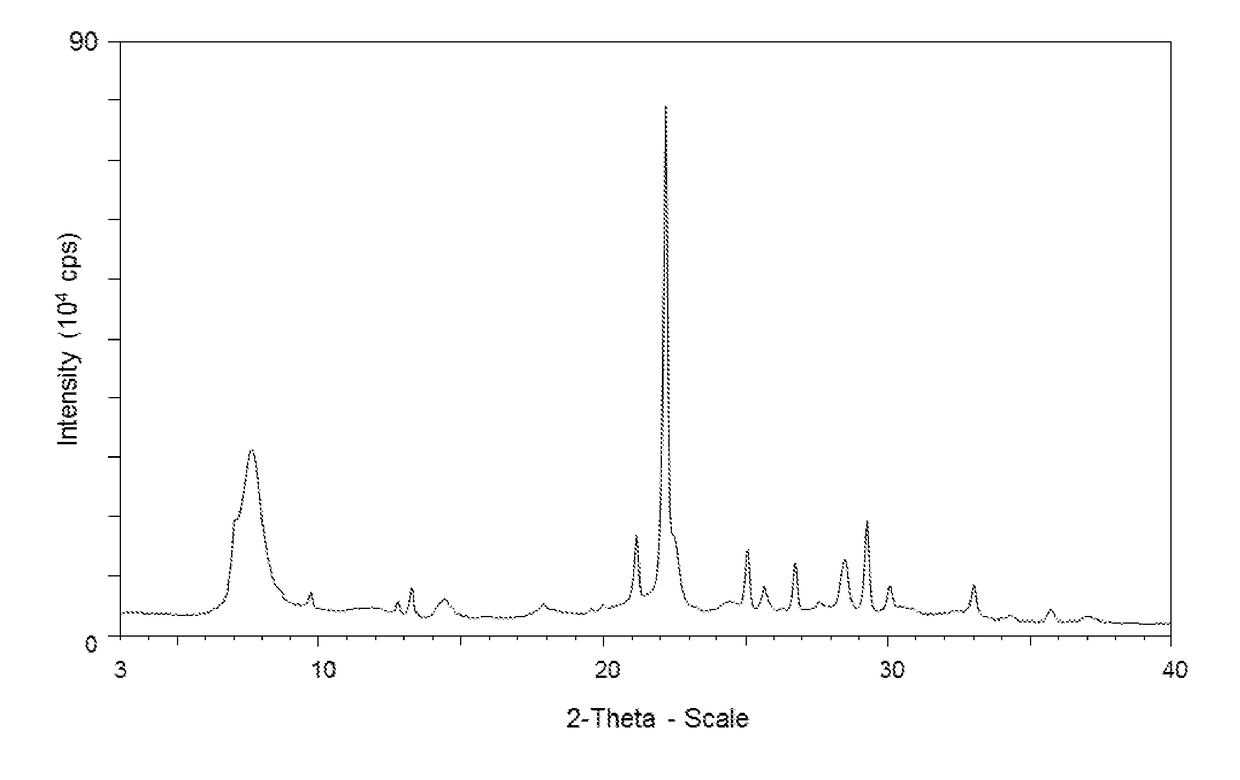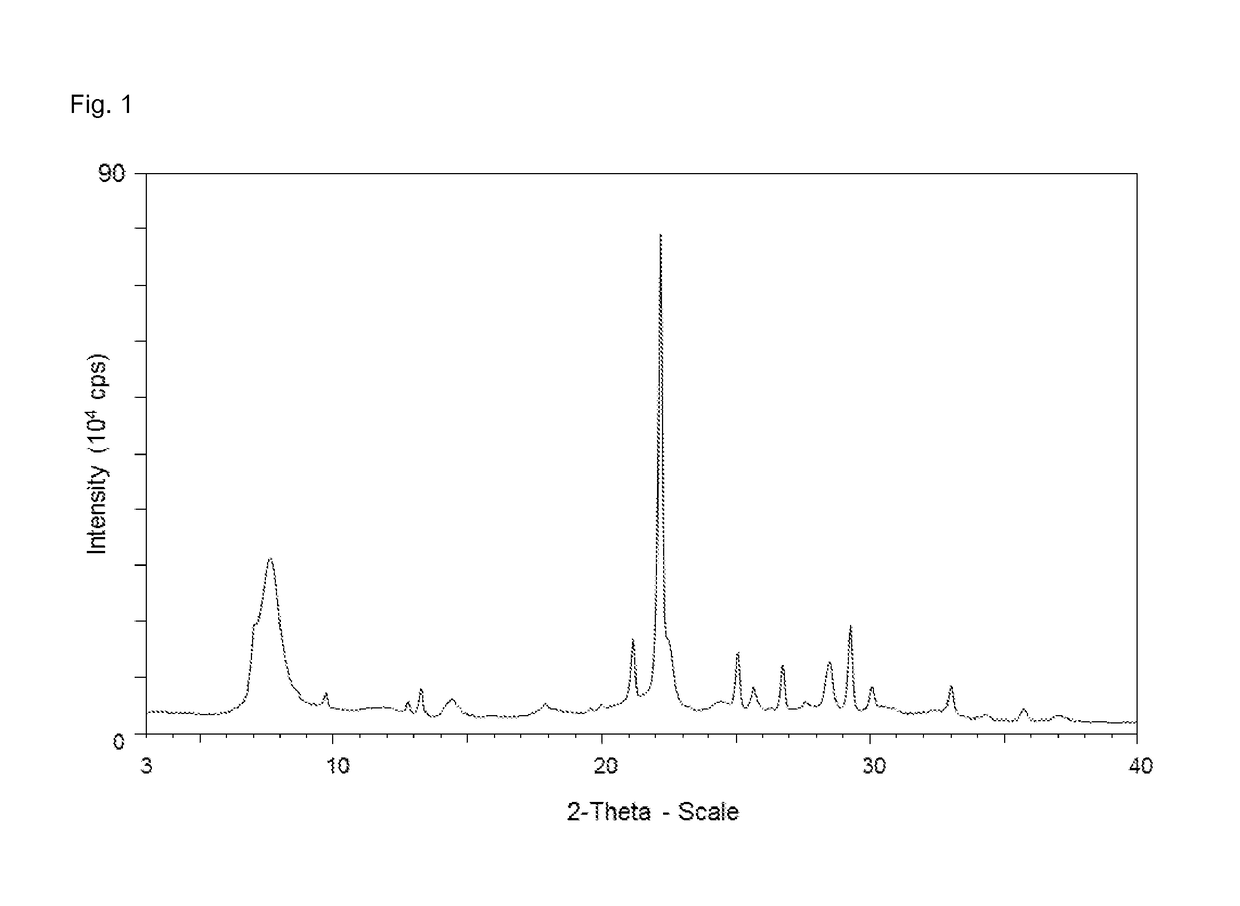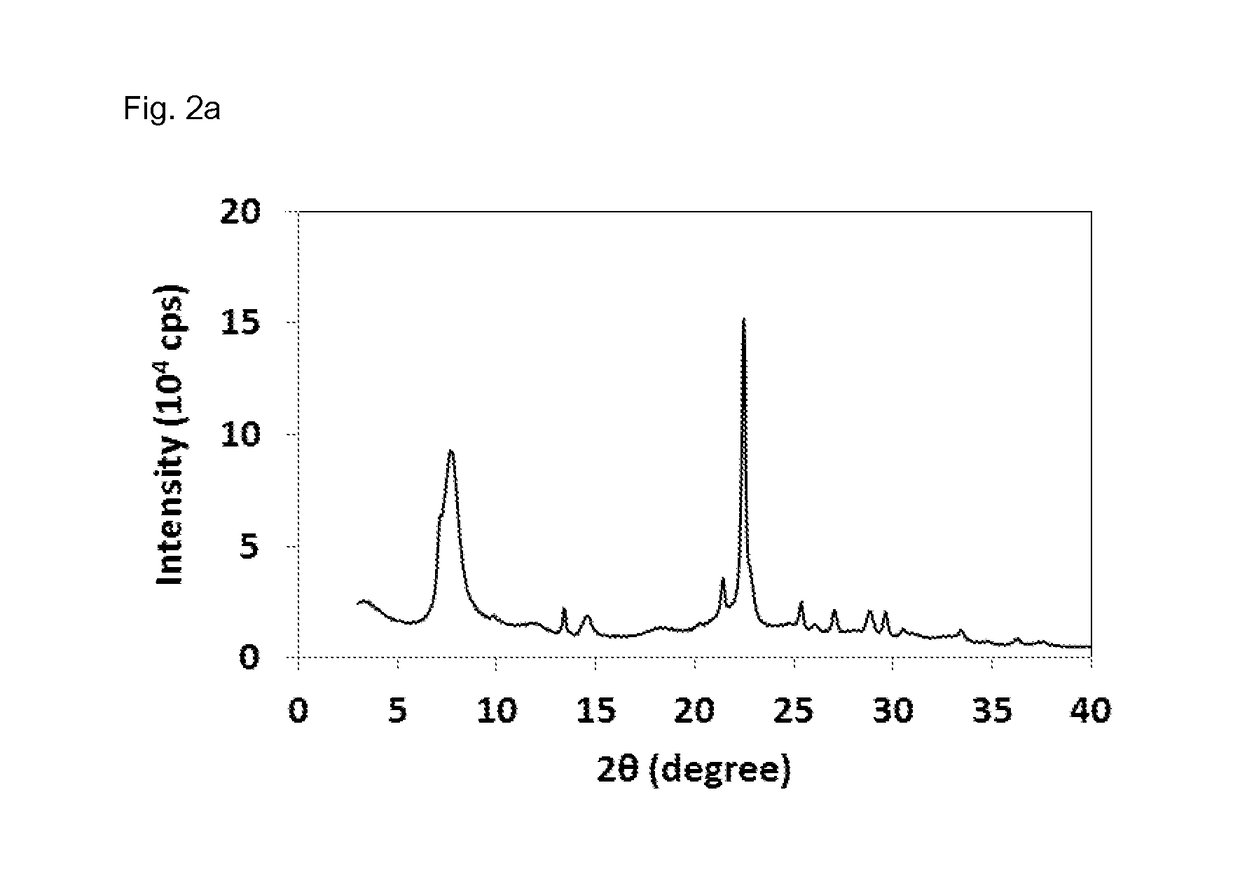Process for the preparation of a dealuminated zeolitic material having the bea framework structure
a technology of zeolitic material and framework structure, which is applied in the field of process for the preparation of a dealuminated zeolitic material having the framework structure, can solve the problems of high concentration of alumina, zeolite may be degraded, and the amount of removed al-species within one cycle may be too low,
- Summary
- Abstract
- Description
- Claims
- Application Information
AI Technical Summary
Benefits of technology
Problems solved by technology
Method used
Image
Examples
reference example 1
Synthesis of Zeolite Beta
[0150]335.1 g of NaAlO2 were dissolved in 7314 g of H2O while stirring, followed by addition of 74.5 g of zeolite Beta seeds (commercially obtained from Zeolyst International, product name: CP814C. Prior to the synthesis, the product was calcined at 500° C. for 5 h (heating ramp 1° C. / min to obtain the H-Form)). The mixture was placed in a 20 L autoclave together with 7340 g sodium waterglass and 1436 g Ludox AS40, affording an aluminosilicate gel with a molar ratio of 1.00 SiO2:0.042 Al2O3:0.57 Na2O:17.5 H2O. Crystallization took place at 120° C. for 117 h. After the reaction mixture was cooled down to room temperature, the solid was separated by filtration, repeatedly washed with distilled water and then dried at 120° C. for 16 h affording 1337 g of a white crystalline product. Chemical analysis indicated an SiO2: Al2O3 molar ratio of 10.89 and 6.7 wt-% of Na2O on a calcined basis.
[0151]1000 g sodium form of the crystalline product was added into 10,000 g ...
reference example 2
ite Beta at 800° C. for 24 h
[0155]For calcination, the NH4-form of zeolite beta obtained in Reference Example 1 was taken as starting material. The white powder was heated in a muffle furnace with 3K / min to 800° C. under air. The temperature was held constant for 24 h. Afterwards, the sample was cooled down to room temperature. Chemical analysis indicated an Si / Al molar ratio of 5.0 and 2O on a calcined basis.
[0156]The X-ray diffraction pattern of the sample obtained is displayed in FIG. 2a. The BET surface area was measured by means of nitrogen sorption at 77K and afforded a value of 611 m2 / g. 27Al MAS NMR analysis (cf. FIG. 2b) revealed the following signal intensities in %: 50-60 ppm (Tetra-coordinated Al-sites) 45.3%, 15-45 ppm (Penta-coordinated Al-sites) 23.5%, −10-10 ppm (Hexa-coordinated Al-sites) 31.1%. The 29Si MAS NMR of the sample obtained is displayed in FIG. 2c and revels the following signal intensities in %: −102 ppm (Q4 (1Al)+Q3) 26%, 15-108 ppm (Q4 (0Al, T3-T9)) 61...
reference example 3
ite Beta at 750° C. for 15 h
[0157]For calcination, the NH4-form of zeolite beta obtained in Reference Example 1 was taken as starting material. The white powder was heated in a muffle furnace with 3K / min to 750° C. under air. The temperature was held constant for 15 h. Afterwards, the sample was cooled down to room temperature. Chemical analysis indicated a Si / Al ratio of 5.0 and 2O on a calcined basis. The BET surface area was measured by means of nitrogen sorption at 77K affording a value of 604 m2 / g.
[0158]The X-ray diffraction pattern of the sample obtained is displayed in FIG. 3a, and displays the following reflections and corresponding intensities:
AngleIntensity[2-Theta °][%]3.3912.26.603127.13434.37.69450.89.81711.711.7828.713.34613.413.577.414.50810.518.2028.120.1549.521.34522.121.70314.322.410022.64127.124.4359.224.7629.425.2971625.9661026.94814.427.93828.64313.629.29734.729.53614.230.4138.130.836.932.465633.3588.236.1245.6
[0159]27Al MAS NMR analysis (see FIG. 3b) revealed t...
PUM
| Property | Measurement | Unit |
|---|---|---|
| Temperature | aaaaa | aaaaa |
| Temperature | aaaaa | aaaaa |
| Temperature | aaaaa | aaaaa |
Abstract
Description
Claims
Application Information
 Login to View More
Login to View More - R&D
- Intellectual Property
- Life Sciences
- Materials
- Tech Scout
- Unparalleled Data Quality
- Higher Quality Content
- 60% Fewer Hallucinations
Browse by: Latest US Patents, China's latest patents, Technical Efficacy Thesaurus, Application Domain, Technology Topic, Popular Technical Reports.
© 2025 PatSnap. All rights reserved.Legal|Privacy policy|Modern Slavery Act Transparency Statement|Sitemap|About US| Contact US: help@patsnap.com



